Every transport system has two parts. One part moves and the other doesn’t. The moving can’t survive without the fixed, and the fixed is pointless without the moving. The relationship between the two is fundamental to Britain’s railway network and fundamental to any examination of its structure and governance.
But before diving in, let’s look very briefly at why we created railways. They sprang from the waggon ways our forebears built to ease the flow of coal, which was the fuel on which Britain built itself from the 18th century onwards. Those waggon ways provided just enough support and guidance for the wheels of the waggons. No more and no less than they needed.
As time and technology moved on, their materials improved and they became joined together to form networks rather than just a collection of point-to-point lines. From 1825 onwards, the rail network grew and grew. It was better able to cope with Britain’s topography than canals and could efficiently distribute goods around the country, primarily raw materials one way and finished goods the other.
Merchants found they could move things more easily. Fish, meat, cattle, milk and vegetables could be carried by rail into towns and cities. Each had its own freight depots. Most have long gone but those at King’s Cross in London remain, now converted into spaces for arts, culture and education. Their footprint more than rivals the nearby passenger station.
The ability to carry passengers came early but it was freight that paid for the railway (when the railway paid, not all did and many speculators lost money). Through the 20th century, the railways saw their freight edge eroded by growing competition from road hauliers that slowly picked off rural and then urban distribution to eventually leave rail concentrating on bulk haulage, chiefly coal.
But coal was declining as domestic and industrial use fell and is today all but gone with the conversion or closure of coal-fired power stations. Some relief has come for railfreight in the form of intermodal containers but today’s railway is almost exclusively for passengers rather than freight.
Rail is no longer Britain’s primary transport network. It’s ceded this position over the last 100 years in favour of roads. Yet it still plays an important role for passengers, as shown by numbers doubling over the last two decades.
Until last March, that is. Almost overnight passengers disappeared as COVID-19 pandemic restrictions set in. The morning peak in London and other major towns and cities evaporated. Leisure travellers stayed at home and business travellers converted kitchens and spare bedrooms into makeshift offices from which to dial into virtual meetings held over the internet.
Before then, the railway could be described by what it did. If anyone needed a vision of what it was for, they could stand on the mezzanine at Waterloo at 0800 on a weekday. Go back ten, 20, 30 or 40 years and 0800 would look similar, albeit on a smaller scale. For London, as in other cities, the railway moved people to and from jobs. It generally moved them from further afield than bus networks as people balanced the cost of their season ticket with their rent or mortgage bills.
What’s disappeared over the last year could be described as the transport system’s third element - its cargo. Without it, the moving part is pointless and the fixed part irrelevant. That’s where the railway stands today.
Having spent billions on capital projects and operational support, Government ministers have a largely empty, unused railway. And make no mistake, it is their railway. They have owned the tracks - the fixed part - since 1948, save for a brief spell under privatised Railtrack between 1996 and 2002. For most of the years since 1948 they have left other organisations to decide the detail of the moving part of passenger services (within the constraints of the fleet sizes they allowed the nationalised railway to have). When privatisation came in 1996, the Government’s semi-independent Office of Passenger Rail Franchising (OPRAF) set minimum service obligations.
OPRAF disappeared into the Strategic Rail Authority in the 2000s with the SRA setting increasingly detailed specifications for franchises. Then ministers abolished the SRA, taking its functions into their department of state, the Department for Transport. This brings us to today with ministers exercising very tight and detailed control over franchised passenger train operators and detailed control over Network Rail as the public owner of the fixed part of the railway.
Only freight operators and a couple of private passenger operators - known as open access operators - stand outside this nationalised control, together with the owners of the trains themselves, the rolling stock companies.
In other words, Britain’s rail network is nationalised. Its money comes almost entirely from taxpayers and without it the nominally private franchises would be bust. Those franchises own little - they lease their trains, stations and depots from others and they pay a fee to run those trains. Even their staff are only ‘on loan’ because they come with the franchise and transfer from owner to owner as the franchise changes owner. And if a franchise fails and the Government steps in, they move to the new government company as happened with Northern and LNER in recent years.
So to recap, private investors built Britain’s railways. With amalgamations along the way, they were private companies owning their tracks and running their trains until 1948. Then the Government nationalised them and tried several reorganisations until 1996 when privatisation sold the tracks and trains while passenger services became franchised under specifications set by an arm’s length body. Government took back the tracks in 2002 but ran them under an arm’s length body that operated as if it were a private company.
This sheen slipped after the pseudo-private Network Rail racked up so much debt at government behest that the Government’s audit body decided that the company was really public. This allowed more active state intervention. Finally, the passenger collapse caused by COVID-19 exposed the reality that the Government really was the operator of last resort, hence today’s tight control of franchises.
Ministers come in two flavours. They are left-wing or right-wing. The left wing favours state control (nationalisation) and the right wing favours free-enterprise. Britain has a right-wing government under the Conservative Party, which was the party that privatised the railway in the 1990s. It finds itself running a railway nationalised in all but name and is increasing in its control. This is not what it core supporters want.
The main left-wing party in England, the Labour Party, wants that extra control to extend to direct operation of trains. It was a Labour government that pushed fixed-network owner Railtrack over the edge and created Network Rail, albeit its NR was created to act as if it were a private company.
But Labour is not in power and has no chance of power before 2024’s likely General Election.
In Scotland, the left-wing Scottish National Party leads the country’s government. Its transport department, Transport Scotland, funds and closely controls Network Rail Scotland but does not own it. It specifies, funds and closely controls the country’s major passenger franchise, ScotRail which is currently run by Abellio.
It even has an overarching railway brand, Scotland’s Railway, and makes little attempt to hide its overall desire to own its rail network. And it makes no effort at all to hide its desire for independence from the United Kingdom, so it stands to reason it would want to own its rail network, both fixed and moving.
Ministers of all flavours will usually admit that civil servants are not best placed to run railways. Railway lobbyists such as the Rail Delivery Group call for independent, arm’s length management of rail on behalf of the Government. This leads to enthusiasm for British Rail Mark 2 or SRA Mark 2.
The first marks of both organisations depended on government money. BR never quite had what it wanted from government - it would present plans, see government trim them and make the best of what was left.
The SRA needed government money for investment projects as well as for Network Rail and any train operator subsidies. In large part the government decided to take over because the SRA was making spending decisions that ministers believed should rest with them.
Whatever governance model the railway adopts - or, more accurately, has placed upon it - it will come down to control of money. As ministers through the 1970s and 1980s didn’t quite give BR enough, so they stored problems. And when money is tight, activities get cut.
Trackside drains were often a favourite for deferred work. Taking one year with the next, a maintenance holiday did little harm. But doing this year after year creates problems. Arguably, it’s at the heart of many of Network Rail’s problems today with earthworks.
Far from removing the problem of railway spending, privatisation added to it as the clamour to fix problems became stronger and then pressure increased to spend more upgrading the railway to allow it to carry all the extra passengers it was carrying or wanted to carry. Hence Railtrack’s West Coast Route Modernisation of the late-1990s that promised a 140mph railway for franchise owner Virgin but which Railtrack failed to deliver. The SRA rescued this project but the ballooning bill landed at the Government’s feet.
It’s a simple step from the current situation to full-blown nationalisation. Had the current Government wanted this, it could have let each franchise fail and taken them in-house. This would effect temporary nationalisation because the law still forbids the Government to run passenger services beyond the short-term (without defining what this is). Costs would be relatively low in contrast to any decision to buy the trains from their owners, for which the bill would be billions.
That’s essentially the policy that the Labour Party revealed last spring on the eve of its leadership competition that replaced left-winger Jeremy Corbin with the more moderate Sir Keir Starmer. Trade unions support nationalisation and reckon there are few problems that can’t be solved with more state control.
Yet the Labour Government that nationalised the railways in 1948 found seemingly intractable problems. They had little spare cash after the costs of the Second World War and were facing a railway with rising material costs, one in desperate need of investment and with a backlog of wartime maintenance and repairs and with trade unions wanting increased pay.
This passage from Cabinet minutes of March 19 1951 is typical of the period: “Some Ministers were reluctant to contemplate any increase in passenger fares, and suggested that decisions might be postponed until the Cabinet had been able to consider the report which the Minister of Transport was to make on the long-term financial prospects of the Transport Commission. On the other side, it was urged that the Transport Commission should not be required to go on accumulating, in the meantime, a deficit, on current operations and ought to be allowed to make some immediate increase in charges to compensate for increased costs, especially those arising from the recent wages award.”
At that time, there was an arm’s length body, the Transport Tribunal, which ruled on another arm’s-length body’s (the British Transport Commission) proposals for freight rate and passenger fare increases. There was tension between the commission, the tribunal and ministers and it came down to money. The commission needed higher rates to meet its costs but ministers feared the political backlash coming from higher rates and knew they would also trigger higher wage claims.
Fast forward to today and there’s an arm’s-length body called the Office of Rail and Road (created at privatisation as the Office of the Rail Regulator). It sets the charges that Network Rail can levy on operators for running trains. These are track access charges. They are calculated by taking NR’s predicted costs of operating, maintaining and renewing the railway over a five-year period and subtracting the Government’s block grant to calculate what balance must be borne by operators.
At the same time the Government controls key fares such as season tickets and decides what their annual increase should be. This was a control brought by privatisation to prevent train companies hiking the fares of their most captive audiences, such as daily commuters for whom there were no other realistic ways of getting to work. It took a few years for ministers to realise they could turn this protection on its head and use it as a way of forcing passengers to pay a higher proportion of the railway’s running costs every year.
The choices for running the railway are nationalisation, privatisation or a hybrid. Over the last half-century, Governments have tried them all and found them all failing in one way or another.
There’s no appetite for selling Network Rail. Any buyer would be taking on debts so large they’d want a government guarantee of some form. They would need hefty government payments either directly (as NR receives now) or through train operators (as Railtrack had and which prompted adverse comments about increased subsidies for private companies).
This fixed network has many challenges, not least its age. NR’s line between Montrose and Aberdeen is closed because a parapet fell from a bridge that was built in the 1840s. That was just a mile or so away from the site of last August’s fatal landslip at Carmont. And Scotland is also coping with landslips elsewhere. Largs has no trains at the moment because a landslip has shut the line. The West Coast Main Line was recently closed near Beattock because of a landslip.
Scotland is not alone. Other parts of NR have similar problems. It all costs money to repair and the bills are potentially unlimited which means that it’s simply not realistic for anyone but a government to own and fund the fixed network.
Current ministers had the opportunity to nationalise their franchised operators recently but chose not to do so. That alone rules out a fully nationalised railway even before you consider what would be done with open access operators or the freight operators (of the big four players only the smallest, DRS, is owned by the UK state).
So that leaves a hybrid model with the fixed network owned by the state and the services provided by operators in private hands with some degree of state specification and subsidy, or no specification and no subsidy, or sold entirely. The latter option is very unlikely to take root and current ministers are pursuing the franchise model with tight government control under emergency agreements.
With privatisation’s track-record of passenger figures and growth destroyed by COVID-19, there appears little likelihood in the short to medium-term, say over the next five years, that competitive franchising will return in a way that provides premium payments from franchisee to government.
If the fundamentals of who owns and operates the fixed and moving parts of the railway are to remain, what can change? Recent arguments circle around the role of the DfT with a January blog by the Rail Delivery Group typical.
It said: “It is vital that the long-awaited rail white paper is published as soon as possible. It must provide clarity about the future structure on which the industry can build a sustainable, world-class network for passengers. While investment to improve services for customers has continued as the railway waits for political decisions about its future structure, the uncertainty has undoubtedly acted as a drag on the developments customers and communities want to see. In 2021, newfound clarity must act as a catalyst for passenger-focussed change.
“Establishing a new arms-length body to act as a guiding mind for the industry will also be key. The clear direction and more coordinated decisions this body can provide will lead to a better railway. Reducing bureaucracy and a clear vision for rail over the coming years is critical in winning back and recruiting passengers onto services.”
The white paper it refers to is the result of a review conducted by Keith Williams back in 2018 - the Government promised the paper in autumn 2019. It follows a long tradition of reviews and reports on which the railway collectively hangs its future.
Sir Roy McNulty looked at costs in 2011, Richard Brown looked at franchising following the DfT’s failures when it let InterCity West Coast in 2012 (Sam Laidlaw looked at specifics of the failure). Colette Bowe examined Network Rail’s enhancement programme in 2015 from a planning perspective. Sir Peter Hendy also reviewed NR’s delivery of its enhancement programme the same year, after costs increased and timescales lengthened. Nicola Shaw looked at Network Rail’s future structure and financing in 2016. The period also saw Chris Gibb examine Southern and Sir Michael Holden look at South Western Railway
In 2017, the DfT published its vision for rail when Chris Grayling was Transport Secretary. It contained little new or revolutionary. Grayling said in his foreword: “The key themes of our vision, reflected in the chapter headings, will be familiar to many readers - they highlight plans to deliver a more reliable, more competitive, growing railway which offers a better deal to passengers.”
DfT’s vision looked for:
- A more reliable railway
- An expanded network
- A better deal for passengers
- A modern workforce
- A productive and innovative sector.
It looked near-term, 2019-24 (Control Period 6), 2024-29 and beyond 2030.
Under the heading of a more reliable railway, DfT put forward the vision of increased integration with closer working between the fixed and moving parts of the network. Suggesting that contractual debate and industry dispute process stood in the way of solving problems, the DfT then cited the success of NR and Virgin Trains in delivering a “best single day of performance ever on the West Coast”. This points towards the DfT rolling out lazy tropes while admitting the current structure could work closely together.
Meanwhile, DfT had been signing franchise agreements that promised passenger benefits that depended on NR delivering work for which DfT had provided no funding. This disconnect lies within DfT and is entirely within ministers’ gift to fix.
More devolution within Network Rail formed another strand of DfT’s vision and this is something NR Chief Executive Andrew Haines is delivering. DfT emphasised the role of NR’s System Operator in developing a better network.
Expansion came with the completion of Thameslink’s upgrade, the arrival (albeit very late and not yet) of Crossrail and various reopening schemes such as East West Rail (but a version cut back by ministers) or line upgrades such as TransPennine Route Upgrade which staggers forward under a heavy weight of expectation yet little overall clarity.
Further into the future comes High Speed 2, while DfT has now cancelled work on Crossrail 2 and appears distinctly cool towards Northern Powerhouse Rail.
The vision broached fares reform saying DfT was working with the rail industry to develop and test potential reforms. Four years on and there’s little visible progress.
Once again, the sticking point is money. Passengers want better value for money, by which they mean cheaper tickets. If the railway is full (and it was before COVID-19) then lower fares equals lower revenue, equals higher subsidy from taxpayers. And the Treasury won’t sign up to that.
With vast sums flowing in to rail operators to combat COVID-19’s devastation, it’s now even less likely that Treasury will agree.
Whatever the result of these discussions, it’s clear that the responsibility sits with DfT while the train operators do all they can to encourage passengers back when the pandemic recedes.
Few could argue with the DfT’s vision for long-term, stable and constructive relationships with rail workers and their representatives. Having staff share in a business’s success, having fully recruited employers with effective modern leadership does not seem much to ask. However, it shouldn’t need DfT to say so.
Meanwhile, DfT claims of wanting a more innovative rail sector are at best nebulous. Train operators led the move towards advance purchase giving many passengers decent discounts on walk-up fares. It was train operators that introduced WiFi back in the 2000s. And it was train operators that brought tilting trains into service in a fraction of the time it took DfT to centrally procure trains to replace High Speed Trains.
But the major point to come from 2017’s vision was DfT’s commitment to franchising. It claimed that franchising had inherent advantages that include dynamism, innovation and public accountability. Yet DfT wanted changes to increase public trust, ensure commercial sustainability and bring adaptability to local circumstances. Those factors could all sit in smarter franchise specifications.
Grayling set out his stall when he said in his foreword: “When Britain’s railways were privatised in the 1990s it was against a background of what many people regarded as terminal decline. Previous attempts to stem losses and stabilise the railway - from Labour’s nationalisation in 1948, to the infamous Beeching cuts in the 1960s and later reorganisation under British Rail - had all failed. By comparison, opening up the railway to private operators, working to requirements set by Government, was an emphatic success. Passenger journeys - which fell by a third between 1960 and 1995 - have since doubled.”
More recently, the DfT has distanced itself from franchising. Transport Secretary Grant Shapps said in September 2020, as he announced the latest round of emergency contracts, that fund operators and keep services running: “The model of privatisation adopted 25 years ago has seen significant rises in passenger numbers, but this pandemic has proven that it is no longer working. Our new deal for rail demands more for passengers. It will simplify people’s journeys, ending the uncertainty and confusion about whether you are using the right ticket or the right train company.
“It will keep the best elements of the private sector, including competition and investment, that have helped to drive growth, but deliver strategic direction, leadership and accountability. Passengers will have reliable, safe services on a network totally built around them.”
Rail Delivery Group Director General Andy Bagnall said in a blog in February: “It’s easy for some to search for simple ideas from the past, like changing ownership. When we submitted our proposals for reform, we focused on what mattered to people: how to make travelling by train better by being more customer focused, more joined up and more accountable.
“That’s why we called for the franchising system to be replaced with new private sector contracts built around the needs of different customers and a new public arm’s length body to join up the system, all underpinned by reform to make fares easier.”
Yet franchising is the model laid out by law and it is working. For rail, franchising is a public-private model. The public side lets the franchise and the private side delivers it. The public as taxpayers pays for socially necessary but unremunerative services. DfT (or Transport Scotland or Transport for Wales) decides what these services are. That can leave a franchise as an overall recipient of public money. Other services the franchise runs may make money and lessen that overall load. Some may make sufficient money that they can pay DfT for the privilege of running the franchise.
Hence in 2016-17, DfT received a net payment of £776 million from train operators. In recent years, train operators have paid the owners around £200m in dividends every year. Meanwhile, DfT has been paying out record sums to Network Rail – £4.2 billion in 2016-17, for example.
So there’s a clear mechanism for train operators to feed money to and from DfT. As more passengers used rail services, either subsidies from DfT reduced or premium payments to DfT increased. The liability placed on operators was not open-ended. If things went wrong, the franchisee was committed to using contracted parent company support to make good the difference until that pre-agreed support ran dry. This happened to Virgin Trains East Coast in 2018.
It would very likely have happened to every operator last year as passenger numbers disappeared. But ministers decided to step in and keep companies going and services running. Had they not, then they’d be running services using DfT companies instead. Whatever they chose, they’d be running the trains.
So, franchising is today’s public-private model for delivering rail services. Tomorrow’s public-private partnership may have a different branding but the fundamentals that lie beneath the brand remain unchanged.
With that thought in mind, arguments about arm’s-length bodies become irrelevant. Had there been such a body between DfT and train operators - let’s call it Rail for Britain for argument’s sake - it could only have reacted to 2020’s events by seeking more money from ministers. There was no other answer if it or ministers wanted to keep trains running.
In the midst of the pandemic, train operators are already negotiating revised plans with DfT as part of their emergency agreements. These plans will be concentrating on how to recover from the loss of passengers and deciding what of their original franchise plans remain relevant. It’s hardly the right time to create a new body to stand between the two sides.
Meanwhile, Network Rail is still devolving with its managers still learning how to make the most of devolution as the centre lets go and the regions and routes pick up that baton. It’s also embarking on workforce reform. That’s challenge enough without asking NR to take on some or all of DfT’s responsibilities for train operators. Or to ask it to take on DfT’s responsibilities for deciding which enhancements to fund. That would recreate British Rail’s situation where it decided what the railway needed and ministers then cut a percentage from it.
That leaves other areas that could be reorganised. You might, for example, take the fares and ticketing side from the Rail Delivery Group to leave it as a trade lobbying body. You might take economic and safety regulation from the Office of Rail and Road. You might take the franchising teams from DfT. You might fold RSSB back into a bigger body (after all, it came from Railtrack 20 years ago). And you might take from NR its System Operator planning functions.
You could push them together into a new body, but you would do little more than rearrange deckchairs because none of these changes solve the fundamental problem of money.
If Britain’s railway is to continue to benefit from taxpayer support then it’s right that ministers decide where that money goes and in what quantity. The answer lies in that 2017 vision. If you ignore the covers and contents pages of that vision the word ‘we’ appears on all but one of its 44 pages (page 10 since you ask). In its own words, DfT acknowledges that it sits at the centre. It conducts the railway orchestra because it pays the musicians. It needs to shape up.

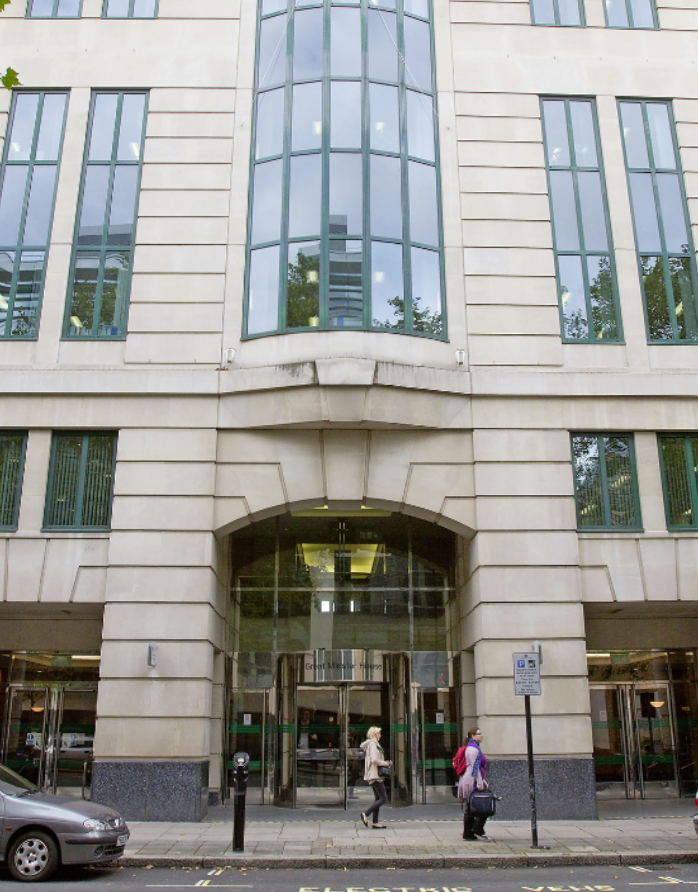
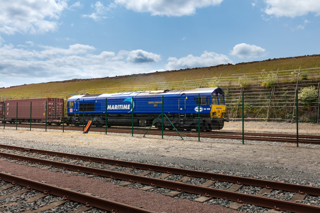
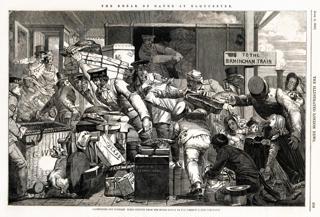
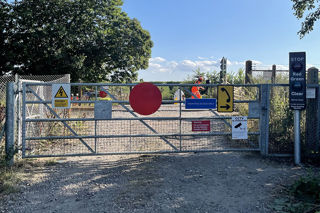
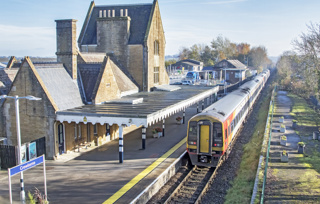
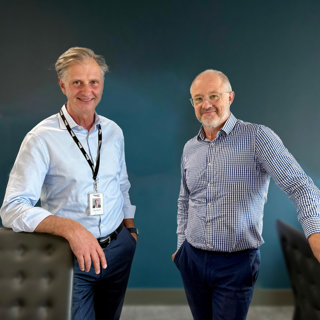

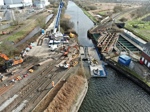







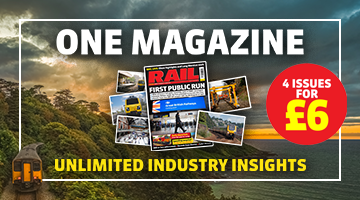

Login to comment
Comments
No comments have been made yet.